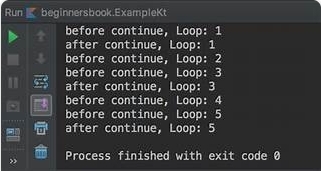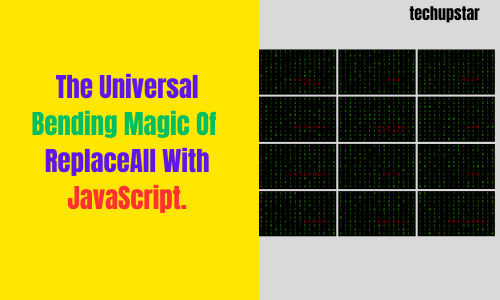Kotlin is a powerful programming language that has been gaining traction in the software development world. One of its most useful features is the kotlin for loop, which can be used to quickly iterate over collections and execute code repeatedly. In this article, we will go through an overview of the Kotlin for loop, including its syntax, how to break out of a loop, when to use it, and common pitfalls to avoid. This guide is essential for anyone looking to use the for loop in Kotlin effectively, as it provides an in-depth look at the language and how to use it.
Understanding the syntax of a basic for loop in Kotlin
The kotlin for loop is an indispensable part of programming with the Kotlin language. This helpful code allows developers to iterate over collections of items, executing code on each item that meets certain conditions.
To begin a for loop, you must provide the necessary parameters in parentheses – the “item” being an individual item from the collection and the “collection” being the source of these items such as an array or list.
When deciding whether or not to use a for loop in your program, it is important to consider which solution will be most effective. Kotlin For Loop, Generally speaking, if you need to perform an action repeatedly with minor variations then a for loop is likely suitable; however, using multiple nested loops can slow down execution time due to their complexity and should be avoided if possible. Additionally, always remember to keep boundary checks in place so that you don’t exceed the size of your collection when iterating over it.
Breaking out of Kotlin for loop

Breaking out of for loops in Kotlin is a key part of programming. The break keyword can be used to jump out of a loop and move on to the code after the loop. This is most commonly used when working with if statements within a for loop. When the break keyword is encountered, it skips the rest of the loop and jumps straight to the code after it.
When using this approach, however, it is important to provide an alternative way of continuing with the loop. This allows the developer to pick up where you left off should you need to do so later on in your program. Kotlin For Loop, An example would be using “continue” instead of “break” when appropriate – this will allow you to skip one iteration of a loop and continue on with the next one without exiting completely from the loop.
It’s also worth noting that if there are no conditions specified within a loop then it will repeat an infinite number of times until manually stopped or broken out from. In these cases, break can be used together with a condition that checks whether or not each cycle has reached its end (e.g., checking if i < x).
Finally, developers should always consider whether or not using a for-loop is the best solution for their task before implementing one in their codebase. If it isn’t necessary, there may be other solutions such as recursion or streams which could end up being more efficient than writing a whole for-loop block from scratch!
When to use a for loop in Kotlin

When working with the for loop in Kotlin, it is important to be aware of when it is the most effective solution. It can be used to iterate through collections, arrays, or sequences and carry out actions on each item. Furthermore, it can also be employed to execute commands a set number of times or access items within a range of numbers. Additionally, its use may be necessary if an operation must be completed until a particular condition is met.
When using the for loop in Kotlin, developers must ensure that their code works with collections of any size without errors occurring. This includes including boundary checks so that only valid values are accessed and operated on during iteration. Additionally, they should always double-check that using the for loop is the right choice – other options could prove more efficient than this language feature.
The break keyword can help coders quickly leave loops and move onto code afterwards; however, an alternative should always be provided in case the loop needs to continue at a later time. Kotlin For Loop, Lastly, when no conditions have been specified within a loop then it will repeat infinitely until stopped or broken out from manually – which must never be forgotten while coding with loops in Kotlin.
Common pitfalls of using a for loop in Kotlin

Kotlin’s for loop is a powerful tool, but it is important to be aware of the common pitfalls that can arise when using it. The following points should be taken into consideration before implementing a for loop in Kotlin:.
1. Incorrect Syntax: When coding in Kotlin, small syntax errors can lead to big problems and mistakes such as incorrect comparison operators or missing brackets can cause issues with the code. It is important to double-check syntax and make sure it is correct before running the program.
2. Infinite Loops: If no conditions are specified within a loop then it will repeat an infinite number of times until manually stopped or broken out from. This could result in unintended consequences such as crashing systems or draining resources if not monitored carefully.
3. Incorrect Comparisons: When coding comparisons, care must be taken to ensure that the right type of comparison operator is used (e.g., == instead of =). Failure to do this could result in unexpected results which may cause bugs further down the line if not caught quickly enough.
4. Missing Brackets: It is also important to check that any brackets used are present and complete – missing brackets could mean that certain parts of code are not executed, resulting in unexpected results which could affect the program’s performance or even crash it completely if left unchecked.
What advantages do Kotlin ranges offer in for-loop constructs?
Kotlin ranges offers a lot of significant Advantages
The advantages Kotlin Ranges offers in the loop include the following
- It makes code easier to understand, you don’t have to look at it a second time before understanding what the code is all about.
- It makes code to be very simple, the code lines will be very simple without exaggerations.
- With this developers will be able to avoid code errors.
- With KOTLIN for loop, sequential data will be perfectly handled.
Can I iterate backward with a Kotlin for loop?
Yes, you can certainly iterate backward with a Kotlin for loop.
For you to achieve this result you have to carefully follow up on this step
- Use the “DownTo” keyword
- Identify those ranges in a reverse order.
With the above steps, you can be able to successfully iterate elements in descending order.
Are there any best practices for using Kotlin for loops efficiently?
Yes, if you aim at the best practices for efficiently using Kotlin For Loop then consider the following guides.
- Focus on the necessary operation: instead of engaging in unnecessary operations you should focus on those necessary stuff, it will surely help to enhance your efficiency.
- Smart Casts: always make use of Kotlin’s smart Casts, this will lead to simpler and cleaner code. Etc.






